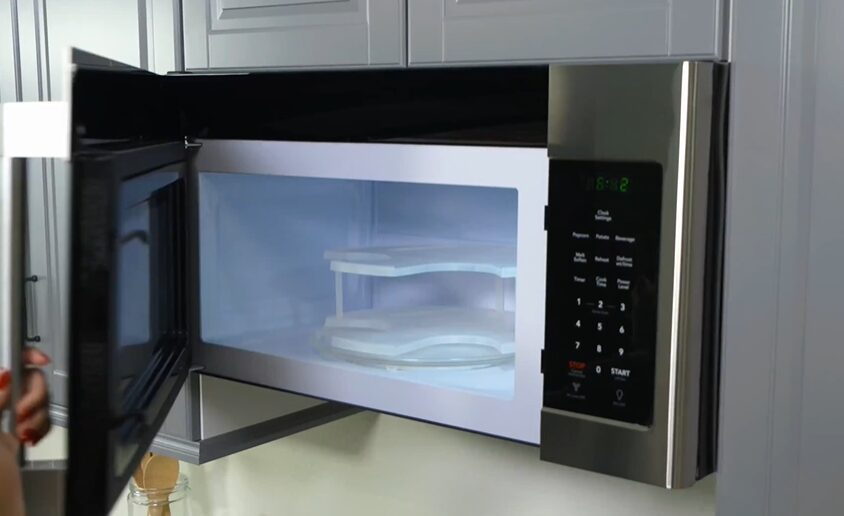Microwave technology is transforming kitchens with smart connectivity, precision cooking, multifunctionality, and eco-friendly innovations. From customizable interfaces and AR integration to sustainability-focused manufacturing, these advancements enhance convenience, improve user experience, and reduce environmental impact.
Current State of Microwave Technology
Microwave ovens today are equipped with versatile features catering to modern needs. Standard models offer basic heating and defrosting functions, while advanced versions include convection and grill capabilities.
Smart connectivity is also becoming common in high-end models, enabling remote control and integration with smart home systems. However, challenges remain, such as uneven heating, limited energy efficiency, and bulky designs.
Emerging Trends in Microwave Technology
The microwave oven, a staple of modern kitchens, is evolving rapidly with cutting-edge innovations. These emerging trends highlight the future of microwave technology and its transformative potential.
Smart Connectivity
Modern microwaves are integrating Wi-Fi and Bluetooth connectivity, allowing users to control and monitor their appliance remotely via smartphones. This feature is particularly useful for setting cooking times, starting or stopping functions, and receiving notifications when cooking is complete.
Voice control compatibility with smart assistants like Alexa and Google Assistant is another exciting addition. With simple voice commands, users can preheat, start, or adjust settings, making cooking hands-free and seamless.
Additionally, AI-driven cooking recommendations are taking the guesswork out of meal preparation. These systems analyze the type of food being cooked and suggest optimal settings for heating, defrosting, or even cooking entire recipes. Some microwaves now come with pre-loaded recipes and step-by-step guides accessible via apps.
Precision Cooking
Uneven heating has long been a limitation of traditional microwaves, but advancements in sensor-driven technology are addressing this issue. Sensors now monitor humidity and temperature within the oven, ensuring precise cooking and preventing overcooked or undercooked results.
Infrared and microwave hybrid systems are another innovation, combining the speed of microwaves with the accuracy of infrared heating. This hybrid approach ensures better browning, crisping, and even cooking for more complex dishes.
Multifunctional Appliances
Today’s microwaves are increasingly multifunctional, combining various cooking methods into a single device. Popular combinations include:
- Air fryer: For healthier, oil-free frying.
- Sous vide: For precise, slow cooking at controlled temperatures.
- Steamer: For nutrient-rich vegetable preparation.
- Oven: For baking, roasting, and grilling.
Microwaves with modular designs are also emerging, enabling users to configure the appliance based on their specific needs. This adaptability makes them suitable for households with diverse cooking preferences.
Eco-Friendly Innovations
Sustainability is becoming a key focus in microwave technology. Manufacturers are incorporating sustainable materials in manufacturing to reduce the environmental impact of production.
Features like enhanced energy efficiency and power-saving modes help reduce electricity consumption, making these appliances more eco-friendly. Some models even use recycling-friendly components, allowing easier disposal or reuse at the end of the product’s lifecycle.
Compact and Portable Designs
For urban living and small spaces, space-saving microwaves with slim, compact designs are becoming popular. These models retain full functionality while minimizing their footprint, making them perfect for apartments or shared kitchens.
Additionally, portable microwaves are being designed for travelers and RV enthusiasts. These lightweight options are easy to carry and operate, providing convenience on the go without sacrificing performance.
Enhancing User Experience in Microwave Technology
As microwaves evolve, the focus is not just on performance but also on improving the overall user experience. From customizable settings to cutting-edge augmented reality, these innovations are designed to make microwaves more intuitive, engaging, and convenient for users.
Customizable Interfaces
Modern microwaves are shifting from traditional dials and buttons to touchscreen interfaces that allow users to customize their cooking experience. These touch screens come with:
- Personalized Presets: Users can save their most-used cooking settings, like defrosting, reheating, or specific recipes, for quick and easy access.
- Interactive Menus: Dynamic screens provide step-by-step instructions, making the microwave more accessible to users of all skill levels.
- Intuitive Layouts: Simplified and clear icons ensure that navigating through settings is easy, even for beginners.
In addition, user-friendly apps now pair with microwaves to allow remote operation and monitoring. Using these apps, users can:
- Start, pause, or stop their microwave from their smartphones.
- Receive notifications when their food is ready.
- Access recipe suggestions or cooking tips tailored to their appliance.
This level of customization ensures that the appliance adapts to the user’s lifestyle, making cooking more efficient and enjoyable.
Augmented Reality (AR) Integration
One of the most exciting advancements in microwave technology is the integration of augmented reality (AR). AR enhances the cooking experience by providing real-time guidance and tutorials through a user’s smartphone or AR glasses. For example:
- Cooking Guidance: Users can point their phone camera at the microwave, and AR overlays will show instructions, such as the best placement for food or reminders to stir during cooking.
- Tutorials and Tips: AR can demonstrate how to use specific functions, making it easier for users to unlock the full potential of their microwave.
By combining AR with smart connectivity, users can learn new recipes or techniques directly from their appliance, making cooking both fun and educational.
Noise Reduction Technology
Traditional microwaves often produce a significant amount of noise, which can be disruptive, especially in small households or shared spaces. Manufacturers are now addressing this issue with noise reduction technology, which offers:
- Quieter Operations: Advanced engineering reduces the noise of fan motors, door mechanisms, and alert tones.
- Adjustable Sound Settings: Users can customize or mute beeps and alerts to match their preferences.
This quieter operation enhances comfort, allowing users to cook meals without disturbing others, whether it’s in a household, office, or late-night setting.
Industry Impacts and Sustainability in Microwave Technology
The microwave industry is evolving to prioritize sustainability and environmental responsibility. Manufacturers are embracing innovative practices to reduce their ecological footprint, enhance energy efficiency, and adopt greener production methods. Here’s how the industry is shaping a more sustainable future:
Role of Innovation in Reducing Environmental Impact
Innovation is at the forefront of the microwave industry’s efforts to minimize its impact on the environment. Modern microwaves now feature:
- Energy-Efficient Technology: Advanced power-saving modes and improved energy consumption reduce electricity usage while maintaining performance.
- Durable Components: Longer-lasting materials ensure that appliances require fewer replacements, lowering overall waste.
- Eco-Friendly Functions: Features like “eco mode” allow users to reduce standby energy consumption, contributing to a greener footprint.
These innovations not only help the environment but also provide cost-saving benefits for consumers through reduced energy bills.
Push Towards Circular Manufacturing and Packaging Practices
The microwave industry is increasingly adopting circular manufacturing practices to address the growing issue of electronic waste:
- Recyclable Components: Many modern microwaves are designed with parts that can be easily disassembled and recycled at the end of their lifecycle.
- Biodegradable Packaging: Manufacturers are shifting away from single-use plastics, using biodegradable or recyclable materials for product packaging.
- Refurbishment Programs: Some companies now offer refurbishment or repair services, extending the life of appliances and reducing the need for new production.
These practices align with the principles of the circular economy, where resources are reused and recycled to reduce waste and reliance on raw materials.
Corporate Responsibility in Creating Greener Appliances
Leading microwave manufacturers are embracing corporate responsibility by committing to sustainable goals. Initiatives include:
- Carbon Neutrality: Companies are working to offset their carbon emissions by investing in renewable energy and reducing waste during production.
- Sustainable Materials: Incorporating renewable materials such as recycled plastics, metals, and sustainable packaging options.
- Transparency: Publicly sharing sustainability reports and progress on eco-friendly goals to build trust and accountability with consumers.
These efforts not only demonstrate a commitment to the environment but also cater to growing consumer demand for sustainable products.
Conclusion
Microwave technology advances with smart features, precision cooking, and eco-friendly designs. Enhanced user experiences and sustainability efforts redefine its role, making it a vital, efficient, and modern kitchen appliance for the future.



































